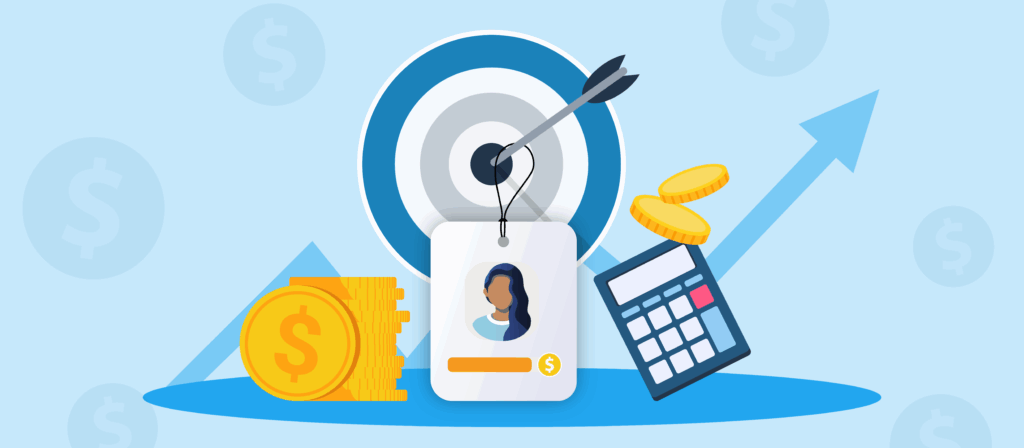How much does it cost to buy leads: A guide for lead buyers

Buying leads can feel like walking into a marketplace with no price tags. Costs vary wildly between industries, vendors, and lead types, and without a clear understanding of what drives those costs, it’s easy to overspend on low-quality prospects.
This guide breaks down what affects lead pricing, what typical costs look like across industries, and how to keep your lead acquisition budget under control using best practices and tools like TrustedForm and LeadConduit. Most importantly, it answers the question on the mind of every lead buyer, “How much does it cost to buy leads?”
What determines the cost of buying leads?
Lead pricing isn’t random; it’s shaped by factors that directly impact performance. The cost of buying leads depends on quality, exclusivity, and intent. The more targeted and conversion-ready a lead is, the more it’s worth. Here’s a breakdown of what drives those costs and why it matters for your bottom line:
1. Industry and competition
Some industries are simply more competitive than others. A mortgage lead isn’t priced the same as a home improvement or insurance lead. In highly regulated or high-value industries (like finance or healthcare), acquiring leads that meet compliance and qualification standards costs more because the stakes and margins are higher.
2. Lead source and generation method
How a lead is generated affects its value. For example:
- Owned and operated leads (generated by your own campaigns) tend to be cheaper long-term but require upfront investment. Also known as first-party leads.
- Third-party leads (purchased from a lead seller) cost more per lead but can scale quickly.
Leads from paid search, social ads, or affiliate campaigns usually cost more because they come from active intent users already looking for your product.
3. Exclusivity
Exclusive leads (sold to one buyer) can cost two to five times more than shared leads (sold to multiple buyers). But exclusivity typically improves conversion rates and ROI. If you’re tired of competing with three other sales teams for the same contact, paying more for exclusivity can actually save you money in the long run.
4. Lead quality and intent
Quality is everything. A “lead” can mean anything from a raw email address scraped from the web to a fully qualified prospect who’s requested a quote. The higher the intent (e.g., filled out a long form, confirmed interest), the higher the cost, but also the higher the conversion potential.
5. Compliance and consent documentation
With growing privacy regulations and TCPA enforcement, documented consent is non-negotiable. Vendors who provide proof of consent can justify higher prices because those leads mitigate the risk of legal exposure.
Average cost of buying leads by industry
Lead pricing isn’t one-size-fits-all. Here’s a general range based on data from MarketingSherpa, Net Atlantic, and market averages:
| Industry | Average Cost per Lead | Notes |
| Financial Services | $40–$200+ per lead | High compliance, competitive bidding |
| Home Services | $15–$60 | Seasonal demand drives variation |
| Insurance (Auto/Life) | $20–$70 | Higher for exclusive or high-intent leads |
| Real Estate | $20–$100 | Exclusive buyer/seller leads cost more |
| Education | $10–$45 | Varies by program level and location |
And if you’re looking at raw contact data providers, costs drop dramatically:
- infoUSA: $0.03–$0.90 per record, depending on volume
- USA Data: $0.07–$0.20 per record
- BuyerZone: $6–$45 per lead, depending on category
Keep in mind: cheap lists are not leads. They’re raw contacts; unverified, uninterested, and often noncompliant. The real cost comes from nurturing and filtering these records to find actual buyers.
How to reduce lead-buying costs (without sacrificing quality)
You don’t have to pay premium prices for high-quality leads; you just need a smarter system for verifying and optimizing them. Here are a few best practices that help control costs and boost ROI.
1. Use TrustedForm to document consent
Every marketer’s nightmare is spending money on leads that didn’t actually consent to be contacted. Not only do those leads convert poorly, but they can also expose your business to TCPA violations.
ActiveProspect’s TrustedForm helps quell these fears by providing independent proof of consent for every lead you buy. It records the exact moment a user submitted their form — including timestamp, URL, and even visual evidence of the form interaction.
Benefits include:
- Mitigated risk of TCPA lawsuits
- Higher-quality, verified leads
- Improved compliance confidence with third-party sellers
2. Track lead sources and conversion data
Not all lead vendors perform equally. Always track conversion rates by source, campaign, and form. By pairing analytics with your CRM data, you’ll quickly see which partners deliver quality leads and which ones drain your budget.
3. Use LeadConduit to filter, enrich, and reject bad leads in real time
If you’re buying leads in volume, bad data — invalid emails, duplicates, fake names, or even TCPA litigators – can more easily infiltrate your lead flows. LeadConduit is a real-time lead optimization platform that helps you clean, enhance, and route leads before they hit your CRM.
With LeadConduit, you can:
- Scrub bad or duplicate leads automatically
- Enrich leads with demographic, contact, or financial data
- Filter by consent status or origin
- Route qualified leads instantly to sales or CRM
By using LeadConduit, you spend less time and money chasing bad leads and more time closing the good ones.
4. Negotiate based on performance
Lead buying isn’t a one-and-done transaction. Many vendors will offer flexible pricing or credit policies based on conversion data. For example, you might negotiate lower prices on shared leads or pay only for leads that meet your qualification standards (known as “cost-per-qualified-lead” models).
If you’ve built a reputation as a reliable buyer who pays promptly and shares performance insights, sellers are often willing to give you priority placement or volume discounts.
Final thoughts
How much does it cost to buy leads? Truth be told, the cost of buying leads varies widely, but the real ROI comes from how you manage them. With the right approach, you can cut through the noise, avoid wasted spend, and focus on leads that actually convert. That means knowing what you’re paying for, demanding proof of consent, and using the right tools to filter out the junk before it drains your budget.
TrustedForm gives you confidence with documented proof of consent, while LeadConduit helps you filter, enrich, and route leads in real time, so you only pay for what works. If you’re serious about making lead buying smarter, safer, and more profitable, these tools are essential.
Unlock the power of TrustedForm and LeadConduit today.




